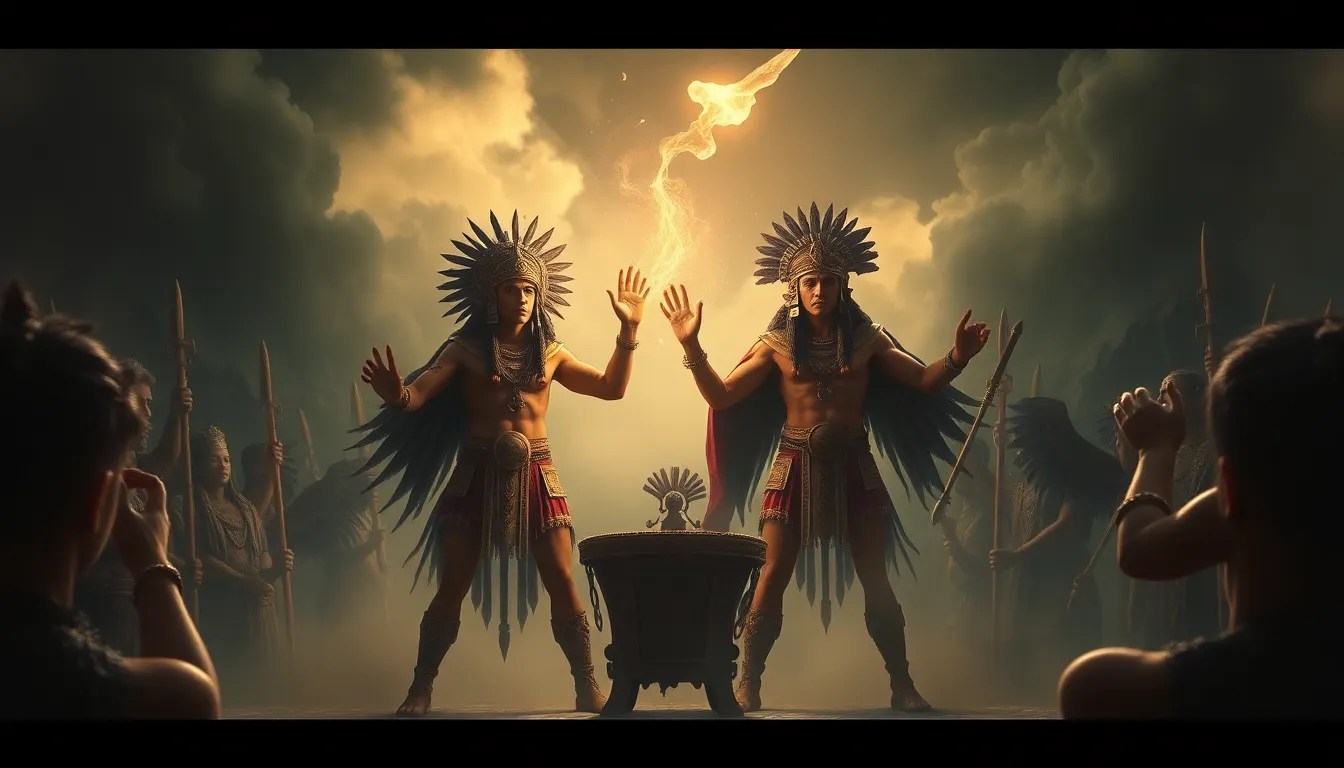The Aztec Priesthood: A Study of Gender Dynamics
I. Introduction
The Aztec civilization, which flourished in central Mexico from the 14th to the 16th centuries, is renowned for its rich cultural tapestry and complex societal structures. At the heart of Aztec society was a deep-seated religious belief system that influenced every aspect of life. The priesthood played a pivotal role in this religious framework, serving not only as spiritual leaders but also as cultural custodians.
This article aims to explore the gender dynamics within the Aztec priesthood, examining how gender influenced roles, responsibilities, and power structures in this ancient society.
II. Structure of the Aztec Priesthood
The Aztec priesthood was characterized by a hierarchical organization that reflected the broader societal structure. The priesthood was divided into various ranks, each with specific roles and responsibilities.
A. Hierarchical organization of priests
At the apex of the priesthood were the high priests, who held significant religious and political power. Below them were various levels of priests who specialized in different deities and rituals.
B. Roles and responsibilities of male and female priests
Male priests primarily conducted major rituals and ceremonies, often involving sacrifices to appease the gods. Female priests, while fewer in number, held critical responsibilities that were equally significant in the religious landscape.
C. Key positions within the priesthood and their significance
- High Priest (Tlāloc): The chief priest responsible for the most important rituals.
- Priests of specific deities: Each deity had a dedicated priesthood, which included both male and female priests.
- Female priests (Cihuatl): Women who served as priestesses, often linked to goddesses of fertility and agriculture.
III. Gender Roles in Aztec Religion
The roles of men and women in Aztec society were traditionally defined, with men often occupying public and political spheres while women were associated with the domestic and spiritual realms.
A. Traditional roles of men and women in Aztec society
Men were primarily seen as warriors and political leaders, while women were responsible for household management and nurturing roles.
B. Examination of male dominance in religious practices
Male priests dominated major rituals and held the highest ranks within the spiritual hierarchy, reflecting a broader pattern of male authority in society.
C. Comparative analysis of female priestly roles
Despite their limited numbers, female priests played vital roles, particularly in rituals that focused on fertility, childbirth, and women’s health, which were crucial to Aztec society.
IV. Female Priests in the Aztec Empire
Female priests, although often overshadowed by their male counterparts, were integral to the religious fabric of the Aztec Empire.
A. Historical examples of prominent female priests
Some notable female figures include the priestesses dedicated to the goddess Xochiquetzal, who represented beauty, love, and fertility.
B. Rituals and ceremonies led by women
Women often led rituals related to fertility and domestic well-being, emphasizing their unique contributions to the spiritual life of the community.
C. Influence of female priests on religious and societal practices
Female priests not only shaped religious practices but also influenced social norms concerning women’s roles in society.
V. Training and Education of Priests
The process of becoming a priest was rigorous and involved extensive training, which varied based on gender.
A. The process of becoming a priest in Aztec society
Priests underwent a lengthy initiation process that included education in rituals, the sacred calendar, and the lore of the gods.
B. Gender-specific training and educational opportunities
While male priests had access to more comprehensive training programs, female priests received specialized education that prepared them for their unique spiritual roles.
C. Access to sacred knowledge for male vs. female priests
Male priests generally had greater access to sacred texts and knowledge, while female priests were often limited to oral traditions and specific rituals.
VI. The Intersection of Gender and Power
The dynamics of gender within the priesthood also intersected with issues of power and influence, shaping the political landscape of the Aztec Empire.
A. How gender dynamics affected authority within the priesthood
Male priests often wielded more authority due to their dominant positions, but female priests could exert influence through their roles in specific rituals.
B. Female priesthood as a source of political influence
In some cases, female priests held considerable sway, particularly in matters related to family and fertility, which were of paramount importance to the Aztec state.
C. Case studies of gendered power struggles in religious contexts
Instances of power struggles can be seen in the competition between male and female priests for influence over the populace and the ruling elite.
VII. Symbolism and Representation
Symbolism in Aztec religious art and literature played a significant role in shaping perceptions of gender roles.
A. Gender symbolism in Aztec religious artwork and literature
Artistic representations often reinforced traditional gender roles, portraying male deities as powerful and female deities as nurturing.
B. Representation of male and female deities in relation to the priesthood
Male deities were often associated with warfare and agriculture, while female deities were linked to fertility and domesticity, reflecting the societal values of the time.
C. The impact of symbolism on societal perceptions of gender roles
The prevalent symbolism in Aztec culture served to perpetuate gender norms, influencing how society viewed the roles of men and women within the priesthood.
VIII. Conclusion
In conclusion, the exploration of gender dynamics in the Aztec priesthood reveals a complex interplay of roles, responsibilities, and power structures. While male priests dominated the higher echelons of the priesthood, female priests played crucial roles that were essential to the spiritual and social fabric of Aztec life.
Understanding these dynamics provides valuable insights into Aztec society as a whole, emphasizing the importance of both genders in maintaining religious practices and societal order. Future research could further illuminate how gender and religion shaped other pre-Columbian cultures, enhancing our understanding of ancient civilizations.



